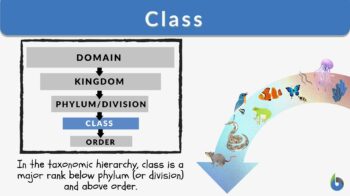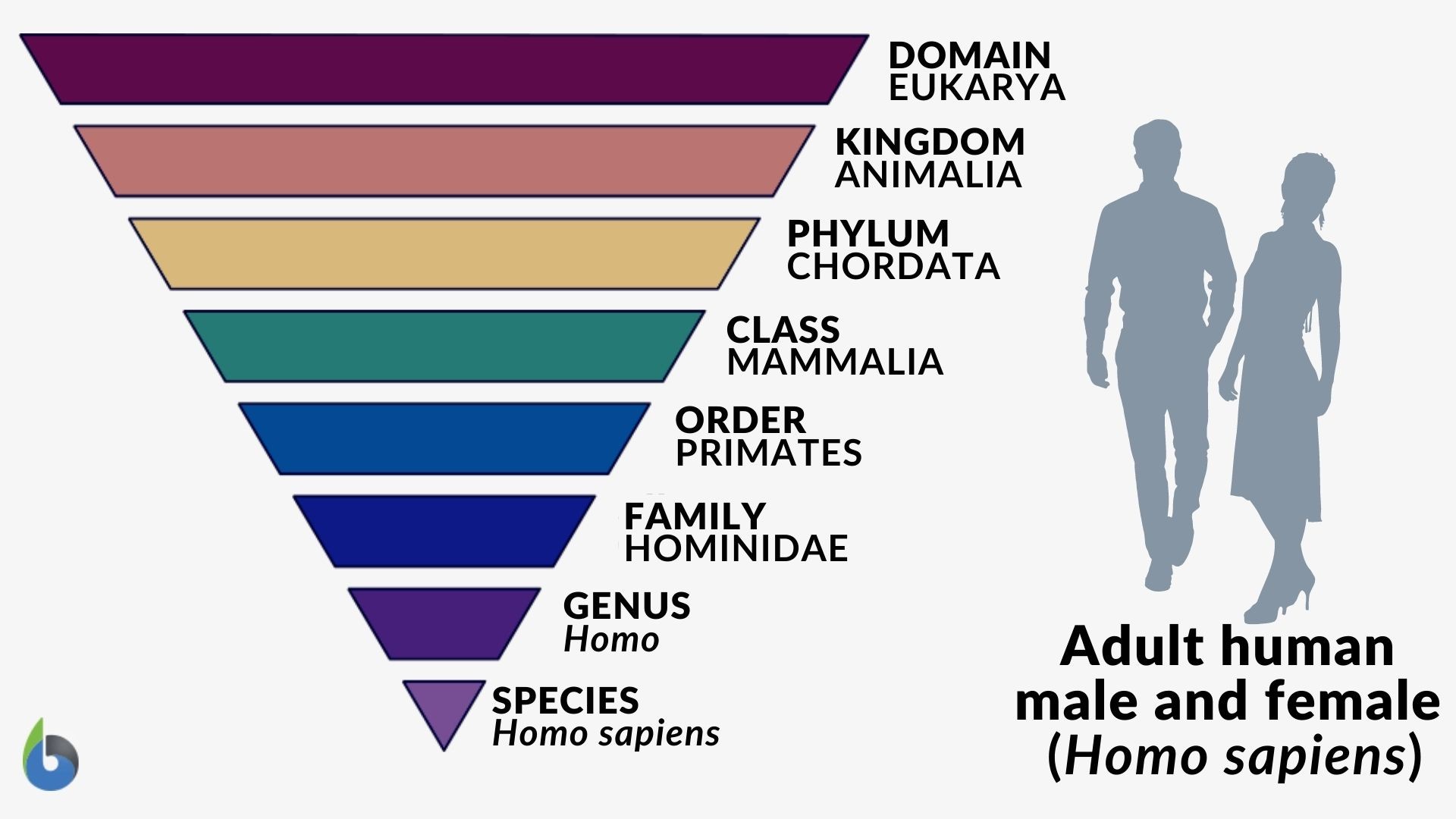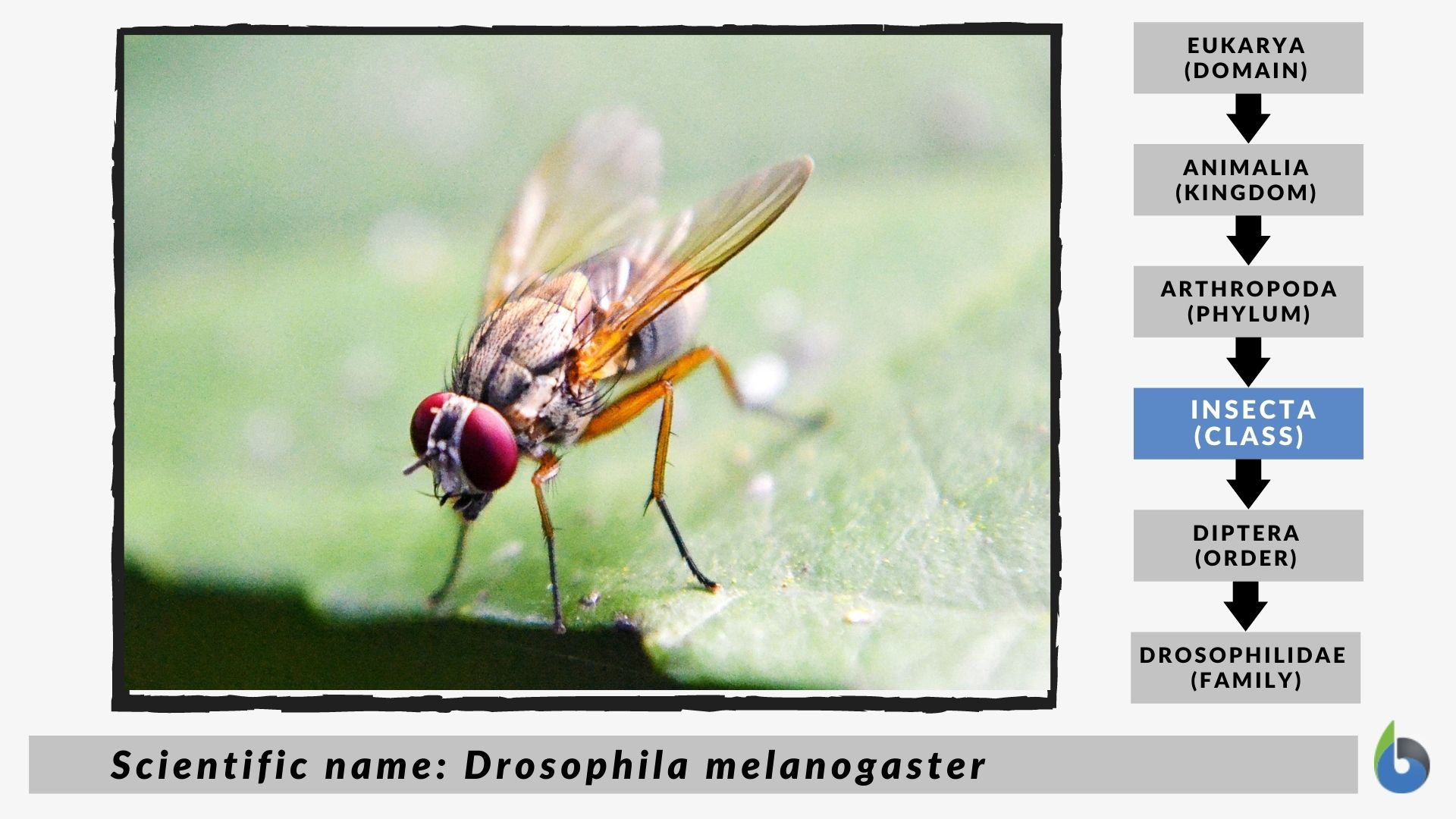
Class
n., plural: classes
[kleəs]
Definition: a taxon below phylum and above order
Table of Contents
Our earth is home to diverse groups of organisms. These living things exist in the ecosystem. Dating back to the ancient civilizations, humans had already been classifying organisms into groups. The grouping, identifying, and naming of organisms based on a scientific system of classification is referred to as taxonomy. And some of the earliest taxonomists (i.e. people who are practicing taxonomy) include the Chinese and the Egyptian herbalists. They had been classifying medicinal plants.

Soon, modern taxonomy emerged as founded by the Swedish botanist, Carl Linnaeus (Carl von Linné) (1707-1778). He classified organisms as to whether they share common physical features or not. He published his work in System Nature. His method of classifying organisms emanated up until now that some taxonomists still use this method in identifying and grouping them.

Taxonomists and biologists use a classification system to identify, name, and categorize organisms. . The levels in biological classification are referred to as taxonomic ranks. Each rank (taxon) is placed in a specific hierarchy.

As you see, there are essentially eight taxonomic ranks. These are Domain, Kingdom, Phylum, Class, Order, Family, Genus, and Species. When we go downwards towards each category, there is more and more specification of organisms (Kiddle, 2021).
Class Definition
What is a class in biology? Let us define “class” in the biological context. In biology, a “class” is a taxonomic rank above the order and below the phylum. In a phylum, there may be numerous classes. Similarly, a taxonomic class may have one or more groups referred to as orders.
For example:
In dog taxonomy, the dogs belong to class Mammalia, which is a group under Phylum Chordata (animals with a notochord). However, class Mammalia consists of animals regarded as mammals. Mammals may be divided into subgroups and one of them is Carnivora, which is a taxonomic order that includes dogs, cats, hyenas, bears, otters, badgers, raccoons, and other mammals that generally eat “flesh” (meat-eaters). Dogs aren’t the only animals that belong to Class Mammalia. Humans also belong to this class but they belong to a different order, which is Primates (see Figure 3).
Class is a taxonomic rank (a taxon) consisting of organisms that share a common attribute; it is further divided into one or more orders. In the biological classification of organisms, a class is a major taxonomic rank below the phylum (or division) and above the order. For example, class Mammalia belongs to the phylum Chordata. Class Mammalia consists of various orders, such as Chiroptera (bats), Primates (apes), Carnivora (dogs, cats, jaguar, bears, etc.), Cetacea (whales), Proboscidea (elephants), and many others. Etymology: from French classe, from Latin classic
History of the Concept
Joseph Pitton de Tournefort, a botanist from France, first introduced the rank of “class” in biological classification. In 1694, he first used this term in his book named Eléments de Botanique. He used this term for the plant’s classification (Hanelt, 2018). And as already mentioned earlier, Carl Linnaeus presented his taxonomic work via his book, Systema Naturae. In the 19th century, the highest level of taxonomic rank was proposed to be Class. Later on, Ernst Haeckel presented Phyla to be the highest in taxonomic rank. Moreover, it was finalized that class is a level of categorization in taxonomy that “sits” below the phylum.
Hierarchy of Biological Classification
There is a hierarchy in taxonomy classification. Going from origin to further down, the grouping becomes more and more specific, until each branch ends at a single species.
For Example:
There is a common starting of every living organism — life. After this, scientists grouped them into three main categories, Domains. These domains are: (1) Archaea, (2) Eukarya, and (3) (Eu)Bacteria. A taxon lower than the domain is Kingdom. After Kingdom, the other taxonomic ranks in the decreasing order are as follows: Phylum (or Division) » Class » Order » Family » Genus » Species.
Kingdom Animalia belongs to the domain Eukarya. In the provided example in the previous section, the dog taxonomy would therefore be as follows:
Domain: Eukarya » Kingdom: Animalia » Phylum: Chordata » Class: Mammalia » Order: Carnivora » Family: Canidae » Genus: Canis » Species: lupus
After species, there could be a subspecies rank, which in the given example above, the subspecies of a domestic dog is familiaris. The full scientific name of a domestic dog would, thus, be Canis lupus familiaris. Sub-species further sets members apart when they belong to the same species. What defines a species is that the members would be able to mate and produce fertile offspring. Wolves, which belong to the same species as domestic dogs, can interbreed with dogs. They produce a hybrid called “wolf-dog”. (International Wolf Symposium 2022, 2013)
Class Examples in Biology
Following are some of the examples of taxonomic classes in biology
Maple Tree Classification
From the maple tree, we not only got syrup but it also has amazing foliage in fall. We already know this about maple trees but let’s know something more about them. The Domain of the maple tree is Eukarya. It also has a nucleus as well as an organelle. It is placed in the kingdom Plantae. The reason to place it in the plant kingdom is that maple trees are autotrophs, i.e. make food themselves and they have cell walls.
Based on the tissue level, the maple belongs to the division Tracheophyta (plants with true vascular tissues). Its class is Magnoliopsida (a class of flowering plants). Sapindales is the order. The order is Sapindales; one of the common features of its members is the ability to produce sap. Sapindaceae is the family. Acer is the genus. Its species is A. saccharum Marsh, and commonly we call it a maple tree. (ITIS Standard Report Page: Acer saccharum, 2011)

Classification of a fruit fly
We all know that the fruit fly is an astonishing organism but at the same time, it is also annoying sometimes. Here is the classification of the fruit fly.
The domain of fruit fly is Eukarya. It has a nucleus as well as an organelle. It belongs to Kingdom Animalia (animal kingdom). The reason to include it in this kingdom is that it is a heterotrophic multicellular organism lacking a cell wall. Due to paired legs, a segmented body, and a hard exoskeleton, its Phylum is Arthropoda. Its class is Insecta (insects). Due to two wings, its order is Diptera.
READ: Insects – Biology Online Tutorial

Try to answer the quiz below to check what you have learned so far about classes.
References
- Hanelt, P. (2018). Taxonomy, evolution, and history. In Onions and allied crops (pp. 1–26). CRC Press.
- International Wolf Symposium 2022. (2013, August). International Wolf Center | Teaching the World about Wolves. https://wolf.org/wolf-info/basic-wolf-info/wolves-and-humans/wolf-dog-hybrids/
- ITIS Standard Report Page: Acer saccharum. (2011). Itis.gov. https://www.itis.gov/servlet/SingleRpt/SingleRpt?search_topic=TSN&search_value=28731#null
- Kiddle. (2021). Class (biology) facts for kids. Retrieved June 16, 2021, from https://kids.kiddle.co/Class_(biology)
- Lumen. (2020). Taxonomy. Retrieved July 20, 2021, from https://courses.lumenlearning.com/wm-biology2/chapter/taxonomy-2/
©BiologyOnline.com. Content provided and moderated by Biology Online Editors.







